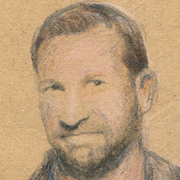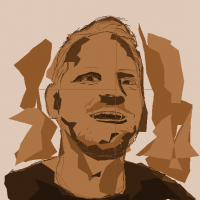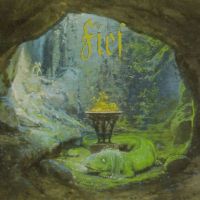
Wyvern
Wyvern
About
- Username
- Wyvern
- Joined
- Visits
- 3,141
- Last Active
- Roles
- Member
- Points
- 5,368
- Rank
- Cartographer
- Badges
- 24
-
Wishlist for CC4
@Glitch - Something else you might try is having a second window with another program (such as Windows Explorer) on full screen mode, so it hides the CC3+ window completely. This helps stop the looping as much, and you can check the thumbnail view to see when the CC3+ screen is showing correctly again. I spotted Ralf did exactly this on this week's livestream at one point, so I know it's not just me who finds this helps sometimes!
-
Looking for Symbols
@Royal Scribe Have you taken a look at the DD3 Creatures symbol options? There isn't a gargoyle, but there is a golem that might work as one. None of the options in that have bases, and most have varicolor options (though not all that work on the whole creature, to turn it to stone, say).
-
The Expanse rpg; several starships, Annual scifi tiles and Cosmographer
My big problem with large ships is visualizing the layout/deck plans.
I forget whether you mentioned having a copy of any of the Metamorphosis Alpha RPG books or not now Jim, though I suspect from this comment probably not, as even the limited floorplans for the two complete decks, and the brief notes on all the others, in the first edition rules from 1976, would have given you a few pointers in this regard.
In one sense, Remy's right in suggesting it may help to think of the whole ship as like a huge city, actually more like a small country, given its gigantic size. Depending on how you envisage the entire craft as functioning, it's perfectly possible some of the decks might have a single function, or several major functions, each. Something like a farming deck for food production and air recycling, including breeding populations of domesticated animals, for instance, while there could be huge areas given over to parked-up machines on another deck for use on whatever planet the ship eventually reaches to colonise (since that's the primary reason such vast craft were envisaged originally). Elsewhere, there could be factories and machinery for use in them stored on another deck, again to get things functioning once the planet was reached, with maybe one entirely water-filled, for living aquatic foodstuffs, and as a water supply for the ship (could easily be segregated into fresh and sea water parts). Plus power supplies of varying kinds, of course.
It might help to work out what the total floor area is for the whole craft, and then compare that to a populated area on Earth somewhere, and see exactly what sort of features lie within a similar-sized zone, and what of those would be useful/essential on a ship destined to be in space for hundreds of years or more.
Hopefully in all this, we can help get you back on course!
-
How do i know what i currently have installed?
Go to CC3+, find the drop-down menu "Tools" in the bar along the top of the window, and then go to the "Add Ons" label in that drop-down. That will show you everything you have currently installed, and you can click on any one of those names to access each individual item's description in an HTML file.
-
Free Late Victorian PDF Maps From Chaosium
We've mentioned before on the Forum that Chaosium provides a lot of free PDF resources that you can download from their website for the various RPGs and supplements they produce. Today, I picked-up a physical copy of their latest Call of Cthulhu book at my FLGS, "Cthulhu By Gaslight - Investigators' Guide", the updated version of an earlier work for the line in which our own ScottA had a hand back in the day!
With the book comes a beautiful fold-out map of late Victorian London drawn by Alyssa Faden, a name doubtless familiar to some here, especially those who have her style pack from the 2014 Annual. You can download a free PDF version of that London map (and a set of the players' maps from the book, which share a similar look) via the links on the Cthulhu By Gaslight webpage here.
-
The Writer's Map
Dragging this topic back into the light, as I recently discovered this book was reprinted in all its glory in 2024 (the original is dated 2018). It's an astonishing, and beautifully-illustrated, collection of essays by various authors. It's been on the shelves in my local bookshop since at least December apparently, though I only saw it in detail for the first time today.
-
Panzer sample thread
Looking good!
I agree on the ground tracks point, particularly for the six and eight-wheelers as they had variations on independent steering per wheel group (and the four-wheelers had independent wheel drives too), so could give much broader overall track spreads.
It might be helpful to have an additional group of aerials to fit to the command vehicles variants (e.g. both the 231 variants, the 232s (6- and 8-rad) and the 222 variant 223), as these are such obvious fixed features in an overhead view, and they have to pass above the turrets, so would need to be drawn that way to allow for the turret pieces to rotate properly.
If you're including the 247, you might want to have the Kfz 13, and the variant Kfz 14 command vehicle - again, it has an overhead aerial, if no turret problem this time!
There are also the SdKfz 221, 260 and 261 (radio car variant of the 260), which you might be able to draw as simply variant top structures/turrets, as being similar to the 222 overall. The 231 (8-rad) headquarters variant, the 263 might be another possibility, along with the 263 (6-rad).
I'll go away now 😎
-
My first completed map utilizing CC3+
Not really seeing too much looking "wrong" with your map, to be honest.
As with most styles, there will be things that seem to work better than others sometimes, and it's often just a question of knowing what options there are, and what (sometimes quite small) tweaks will help make things look closer to what you were hoping for. Sue already covered your points regarding forests, settlement placement, and terrain fill blending, I think.
For your point 3, symbol scaling, sometimes the "correct" symbol scaling just doesn't look right - or maybe not for all the available symbols - so you simply have to rescale the ones that don't look so good to fit more with how you envisaged them looking at the scale of the whole map (not zoomed-in though!).
Point 5, unknown areas. You could add areas of a standard terrain fill with no symbols or other features, and maybe add a new Sheet with a pale single-colour polygon - like a grey or white - drawn over the unknown region, and add a Transparency Effect to that, perhaps with an Edge Fade as well. Or you could try a Blur Effect on the terrain fill itself - again set it on its own Sheet so it's not ALL the terrain that does this! Blur can make the file uncomfortably large if used too frequently, however. Just trying things out with the Sheet Effects is always worth doing, so you get a better feeling for what they can do. If there are terrain features that must be in the region too, you can also partly hide them this way. It really depends what you want the area to have the players might know about in advance.
-
Where to Find Additional Assets?
Try typing general keywords into the DriveThru search-bar - such as "mapping icons" or "map symbols". If you try to make the terms too specific, the search facility tends to get quite restrictive, so unless you know the name of a specific product you're trying to find, it's probably best to avoid them.
-
Cosmographer and Moon Orbits
This is a pretty complex set of tasks you're hoping to accomplish here, but as long as you're happy to put in the work yourself, it should be perfectly possible. That may depend on how comfortable you are working with the mathematics of orbital mechanics, however, and exactly what degree of precision you're hoping to achieve.
I'm not aware of any tools that will allow you to do all of this in one, but you may find some of the tools linked from the Worldbuilding Links and Software page of the Orion's Arm Universe Project website helpful. Note that some of these are only available via the Wayback Machine archival website now, and may use older software types to function. I've not really done much with this in a long time, so can only hope some of it may assist!
Unfortunately, the few folks I know, or knew, who did this kind of thing tended to write their own programs to do it, and while that may be an option for you too, that's not something I've had any experience with, sadly.
Good luck anyway!










